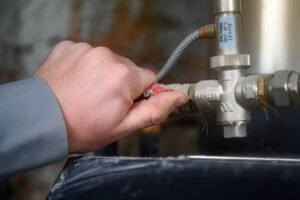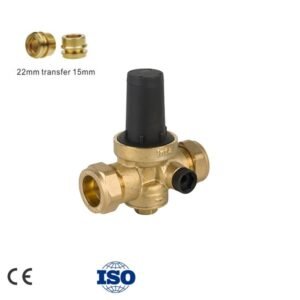In the realm of water management, ensuring the delivery of water at optimal pressure is a critical task, particularly in settings where the water supply is sourced from municipal lines that often run at pressures too high for residential, commercial, or industrial systems. This is where pressure reducing valves (PRVs) play an essential role. Designed to regulate and reduce incoming water pressure to a safer, more manageable level, these valves not only prolong the lifespan of plumbing systems but also contribute to more efficient water usage and reduced costs. This comprehensive guide delves into the function, types, selection criteria, installation, maintenance, and troubleshooting of pressure reducing valves, providing a valuable resource for anyone involved in water system management.
Understanding Pressure Reducing Valves
Functionality:
A pressure reducing valve automatically reduces the water pressure from the main water supply to a level that is more acceptable for use in domestic, commercial, or industrial environments. The principal benefit of a PRV is to provide consistent pressure, which protects the infrastructure and ensures efficient operation of appliances and fixtures.
Components:
A typical PRV consists of an inlet and outlet port, a diaphragm or piston, a spring, and an adjustment mechanism. The valve operates on a simple principle: as high-pressure water enters the valve, it pushes against the diaphragm, which is counterbalanced by a spring. Adjusting the tension on the spring allows the user to set the desired output pressure.
Types of Pressure Reducing Valves
- Direct-Acting Valves:
These are the most common type of PRVs, featuring a straightforward design where the spring exerts pressure directly on the diaphragm or piston. Suitable for smaller systems or residential use, direct-acting valves are compact, cost-effective, and easy to maintain. - Pilot-Operated Valves:
These valves use a secondary pilot valve to control the main valve. This design is more suitable for larger systems with variable flow rates and high pressures. Pilot-operated PRVs are highly effective in maintaining constant outlet pressure despite fluctuations in the inlet pressure or flow demand. - Self-Actuated Valves:
These valves do not require any external control. Instead, they rely on the downstream pressure to actuate the valve mechanism. They are less common and typically used in specialized industrial applications where precise control of pressure is essential.
Selection Criteria for Pressure Reducing Valves
Size and Connection:
The size of the PRV must match the pipeline size to ensure adequate flow rates without causing a drop in pressure. Connection types (threaded or flanged) should also be considered based on the existing piping and the ease of installation and maintenance.
Material:
The choice of material for the PRV should correspond to the type of fluid being controlled and the operating environment. Common materials include brass, stainless steel, and PVC, each offering different levels of resistance to corrosion and varying temperature and pressure capacities.
Pressure Settings:
Select a valve that can handle both the maximum inlet pressure and the desired range of outlet pressures. Most residential systems operate effectively at pressures between 30-50 psi, while industrial systems may require higher settings.
Certifications:
Look for valves that meet industry standards and certifications, such as NSF, WRAS, or similar, which ensure compliance with health and safety regulations, particularly when dealing with potable water.
Installation and Maintenance
Installation:
Installing a PRV requires a clear understanding of the water system’s layout. It should be installed in a location where it can be easily accessed for maintenance. It is crucial to install the valve in the correct orientation, as marked on the body, to function properly. The installation may also require shut-off valves on either side of the PRV for easy isolation.
Maintenance:
Regular maintenance is vital to ensure the longevity and functionality of the PRV. This includes periodic checks for leaks, corrosion, and blockages. The valve should be cleaned and recalibrated if any changes in water pressure are noticed. Most manufacturers recommend an annual inspection and service by a qualified technician.
Troubleshooting Common Issues
- No Reduction in Pressure:
If the PRV fails to reduce the pressure, the spring may be incorrectly adjusted, or the diaphragm might be damaged. Consult the manufacturer’s manual for adjustment instructions or consider replacing the damaged components. - Excessive Noise or Vibration:
This could indicate cavitation or a loose component within the valve. It may be necessary to adjust the pressure settings or inspect the valve for any physical damage. - Continuous Leaks:
Persistent leaks from the valve body or its connections might suggest worn seals or gaskets. Replacing these components can usually resolve the issue.
Conclusion
Pressure reducing valves are indispensable components in the management of water pressure within various systems, ensuring safety, efficiency, and longevity of the infrastructure. By choosing the correct type, properly installing, and regularly maintaining
the PRV, system managers can prevent the common pitfalls associated with high or fluctuating water pressures. Whether for a home, business, or industrial facility, understanding the fundamentals of pressure reducing valves is key to optimizing water system performance and achieving significant cost savings.






